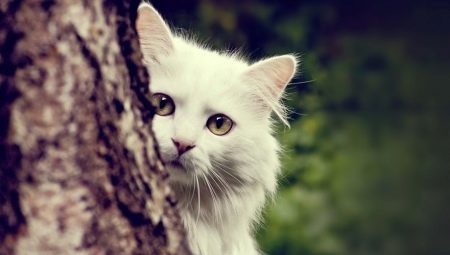The most common pets are cats. Currently, there are many diverse breeds of these cute creatures. Among all this diversity, the Angora cat breed, the oldest in origin and best known to many fans, stands out.
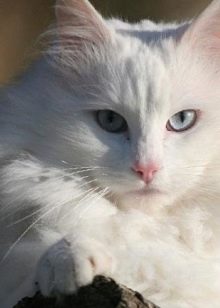
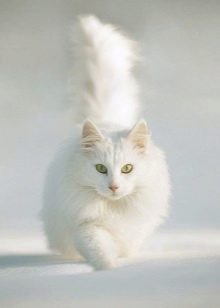

Origin history
Angora cats, as, indeed, all breeds, originate from wild relatives. The ancestor of these cute creatures is a wild African cat or, as it is also called, a Middle Eastern cat. The first domesticated short-haired descendants of this species were in Turkey (then eastern Anatolia), from where they were taken to Egypt. Due to the repeated mutation, their coat became not only long, but also acquired a white color recognizable for the breed.
The oldest domesticated cats from Eastern Anatolia are the progenitors of the Vanilla cat. In them, like in Turkish Angora, the mutation of the gene responsible for the length of the coat occurred gradually. Externally similar, these breeds belonging to a single Mediterranean group still have some differences from each other at the genetic level.
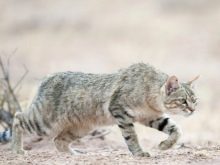

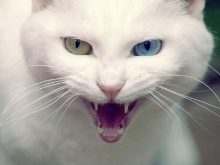
The Angora cat, created by the efforts of European and American breeders, received official status thanks to individuals located in Turkey at the Ankara Zoo. They were taken out, and then officially registered in the middle of the twentieth century.
But the breed itself gained fame in Europe much earlier.According to some reports, the first representatives of the breed were introduced into European territory in the XIV century, during the military campaigns of a religious orientation. According to other sources, the first long-haired kittens with a white color appeared on the territory of Europe only in the 16th century, and the independent breed was recognized only at the beginning of the 17th century.
Representatives of the breed imported to Europe became the decoration of many noble houses. And this is not surprising, because before the appearance of the Angora beauties in Europe there were no long-haired cats.

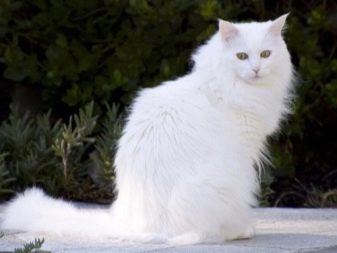
In Turkey, cats of this breed were very appreciated and cost fabulous money, so only very wealthy people could buy them. Angora cats lived in the Sultan's palace. The representatives of this breed had a rather high status: they were allowed to enter the mosque and stay there as long as they wanted. And this is not surprising, because the Muslims considered them close to the prophet Muhammad.
By the end of the 16th century, long-haired cats with white color spread widely throughout Europe. They began to import them to France and Great Britain not only from the territory of Byzantine Ankira (Ankara), the birthplace of the breed, but also from Persia (modern Iran), Central Asia, and even, oddly enough, from Russia. Angora cats are often used to improve the quality of the hair of the Persian breed. Mindless mating led to a sharp decrease in the number of Angora cats, which almost led to the complete extinction of these individuals.
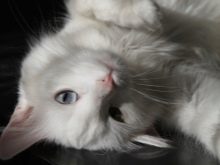
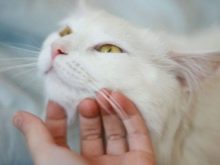
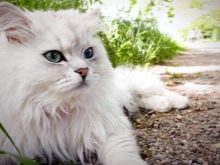
They started to breed only at the beginning of the XX century. The breeding program, approved by the Turkish government in 1917, aimed not only to save the breed, but also to increase the number of individuals. Ankar Zoo was selected for breedings. The Angora breed received official registration in an organization engaged in the breeding of new cat breeds (CFA) only in the middle of the 20th century - in 1973. Until 1978, only individuals with a white color were allowed to register, but over time the requirements softened, and it became possible to register cats with other colors.
Each country has the right to accept some amendments to the registration. For Great Britain, only individuals with a pure white color are considered the standard, while in the USA cats and other colors are allowed to be registered, but lilac and chocolate colors are unacceptable.
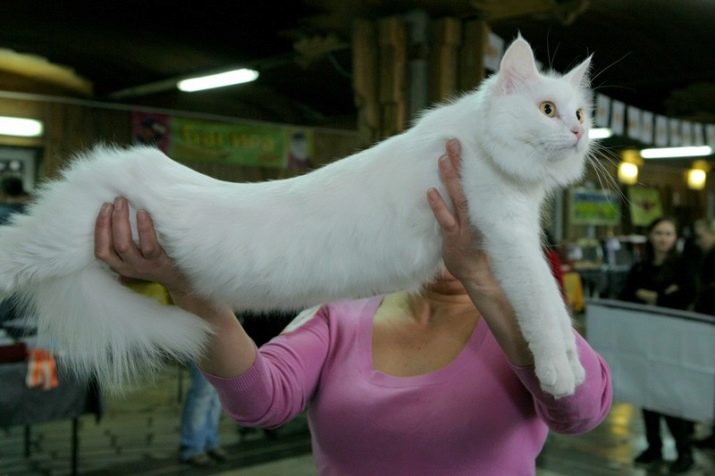
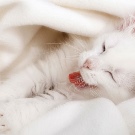

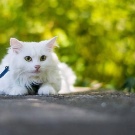
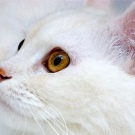

Description
Each breed of cat has its own standards of beauty and characteristics, which Angora animals also have. Representatives of this breed have a small and even somewhat dry physique, but their musculature is still well developed. They are flexible, graceful and very elegant. The weight of cats is traditionally slightly less than that of cats. For females, the norm is considered an indicator in the range of 2.5-3 kg, and for males - in the range of 4-5 kg. The weight of individual representatives may deviate slightly from the norm: for cats - 4 kg, and for cats - 6 kg.
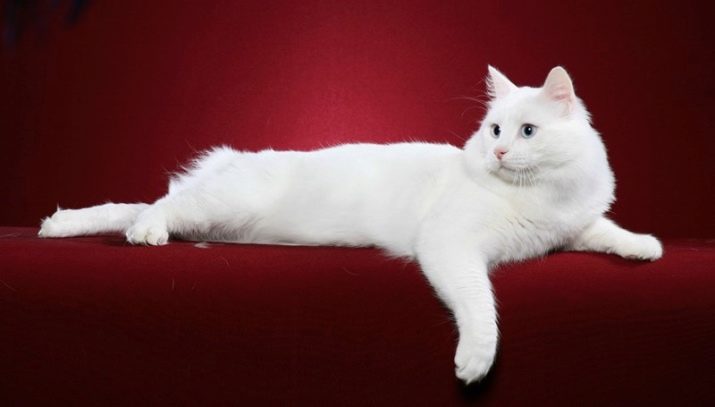
The wedge-shaped type of the head of Angora cats with a characteristic narrow but strong chin and a well-developed frontal part is one of the hallmarks of this breed of animals. A long thin neck with a smoothly outlined muzzle, on which quite large, widely set, almond grain eyes stand out, looks very elegant. The color of slightly slanting eyes varies: there are individuals with both green, yellow, and blue color of the iris. Very often, the Turkish variety has heterochromia - colored eyes.

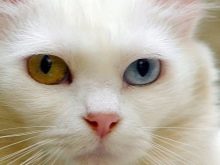
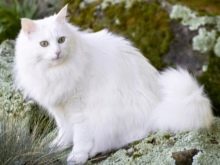
The described breed is characterized by large, closely spaced ears with pointed upper tips. In some representatives, the tips of the ears are decorated with tassels consisting of longer hairs compared to the hair on the muzzle. The inner part of the auricle is covered with long thick tufts of wool, resembling a miniature brush in shape.
The limbs of cats of this breed are long, dry, but with well-developed muscles.Hind legs slightly longer than forelegs. The shape of the legs is mainly oval, between the fingers there are dense tufts of wool characteristic of these cats.
A distinctive feature of the breed is a luxurious long tail resembling an ostrich feather in shape. Dense and wide throughout the length and neatly pointed at the tip of the tail is framed by a long silky coat.
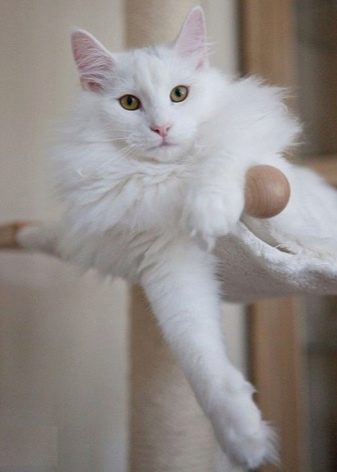
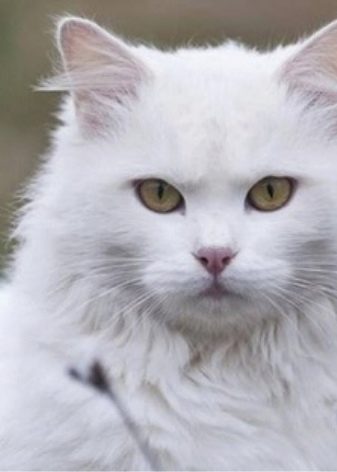
Angora cats have very beautiful and silky to the touch hair with a slightly wavy structure in the abdomen. The flowing effect on the wool became possible due to the absence of undercoat - it consists only of the outer hair. Angora breeds practically do not have any tassels and lumps inherent in long-haired cats and cats, since the process of formation of unsightly piled lumps occurs due to the presence of a thick undercoat.
The color of the coat varies. The classic version is, of course, white. He is the most desired and sought after for such a breed.
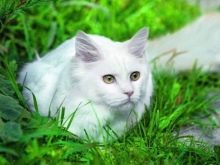
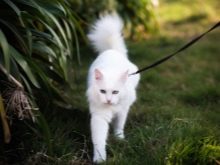
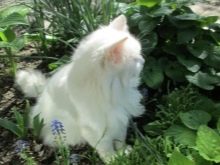
Character Features
Angora cats are friendly and very cute creatures. They get along well with all household members, but most of all are attached to the one who feeds them and spends the most time with them. Strangers are treated with caution, but without unnecessary aggression. They will not hiss, but prefer to go away or hide in a secluded area. But after some time they may come up in order to sniff the stranger. If they like the smell, and the person does not show aggressiveness towards them, they can even let themselves stroke or even jump onto their knees.
Cats of this breed are non-conflict. The presence of other animals in the house does not affect their lives. Basically, animals prefer to stay at a short distance from other representatives of the fauna, but they can make friends with them, especially if contacts with people are minimized. Confidential relations often develop with dogs: some representatives can even eat from a dog bowl and sleep next to them. Relations with other members of the feline family are quite neutral. But still, Angora cats prefer the host society more than communicating with other animals.
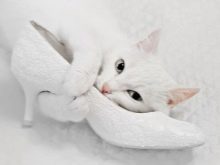
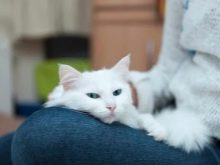
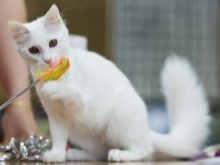
If the family has small children, then cats can become their caring “nannies”. They can sit for hours near the crib during the baby’s sleep or play with him for a long time when he is awake. The tears of a little friend make the cat very worried and take a series of actions. She will lick her cheeks, rub and purr until the baby calms down. And if someone raises his voice or swings at the baby, then the cat may bite the offender - representatives of the breed are not cowardly.
They are not only friendly, but also curious and playful. Representatives of this breed, as, however, and all cats, love to be on high objects. Sitting on a tree, curtain, high cabinet or on a windowsill, they do not just look, but carefully observe all objects falling into her field of vision.
Cats are equally interested in people, and insects, and other animals.
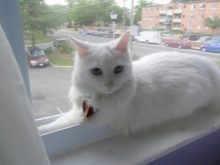
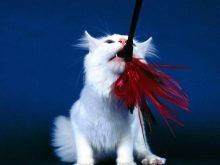

They are also interested in where the owner is currently located. Turkish varieties of this breed love to follow every movement of the owner and can spend hours pursuing him in all corners of a house, apartment or garden, requiring increased attention to his person.
Sometimes this behavior becomes even too intrusive, because the representatives of the breed are famous for their stubbornness and waywardness. In order to obtain certain actions from the owner, they can not only gently rub on the leg or meow, but even even slightly bite. These cute pranksters use all the methods available to them in order to attract the attention of their beloved host. And even their punishment can be difficult to stop, although at normal times they perfectly understand what a certain act can lead to.
The habits of the Turkish species of cats sometimes resemble those of a dog. According to the owners, cats with pleasure not only play with various objects, but can bring them to the owner to continue the game. Wearing various objects in your teeth is one of this breed's favorite pastimes.
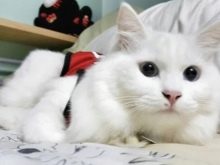
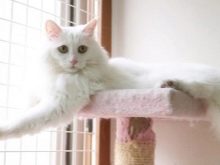
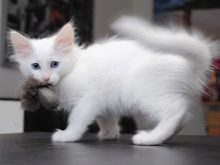
According to owners, cats have good intelligence. They are quite capable of learning how to cope with opening and closing doors in a short time, understand how to get to a switch or an electric device and press a button, and are able to open simple bag locks. They are easier than cats of other breeds to learn to perform certain tricks. Due to their intelligence and natural cleanliness, cats from an early age and in a short time get used to the specific location of their toilet.
In addition, they can be quickly accustomed to the claw point, which saves the animal from such a barbaric procedure as the removal of claws. Their natural ingenuity allows them to quickly adapt to a new habitat.

Cats of the Turkish variety are excellent hunters - they cope not only with rodents that live on the ground, but are also able to track down and catch a bird or insect during the flight. Their rather long paws and muscular body allow precise jumps to high surfaces.

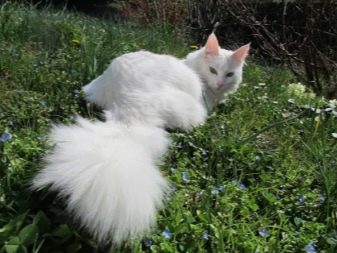
In Angora cats, unlike other breeds, there is practically no fear of water procedures. They are very supportive of pouring them with water and even enjoy splashing in small containers. But they need to be accustomed to water from an early age, but it is better if this is done not without the participation of a mother cat.
Another distinctive feature of the breed is their amazing manner of reproducing sound. Of course, they, like other cats, can meow, but their uterine purr without opening their mouth makes an indelible impression. At the same time, feline representatives are thus able to convey their mood, different in emotional coloring. Cats of this breed with pleasure and for a long time can communicate with the owner in this way, and not the usual "meow".
Surprisingly, they react quite vividly to musical sounds. For example, a funny melody can push an animal to play, and a calm and sad song only makes them make a mournful purr.
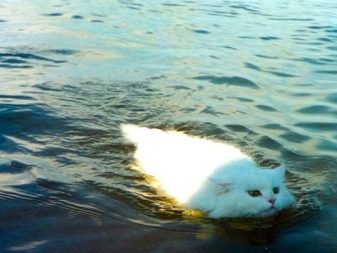
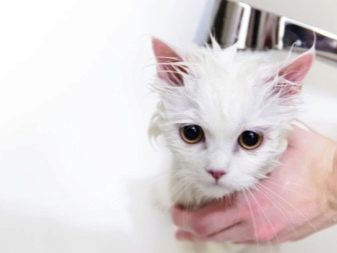
Life span
The life span of cats depends on many factors. This indicator is affected by the breed, genetic characteristics, living conditions and, of course, nutrition. The average life expectancy of cats is in the range of 10-14 years. Representatives of the Turkish species live on average from 12 to 15 years. At first glance, this is very small, but cats have their own rhythm of life, and one year of feline life does not at all equal one human year. There is an opinion that the age of cats should be considered 1 to 7, but this is not entirely true. In the first two years of life, growth and development are much more intensive compared to subsequent years, and therefore the first year is about 15 human years. The second year is equal to 24 years of human life, and all subsequent years add 4 years to cats.
Angora cats that live up to 15 years of age by human standards are, though not decrepit, but old people, because they are already about 90 years old. The Turkish variety belongs to the eastern group, and according to veterinarians, it is precisely the representatives of this group that are distinguished by endurance and good health. Among them, the most long-lived individuals. Under good living conditions and a balanced diet, Angora cats can live up to 20 years, and this is a lot by human standards.
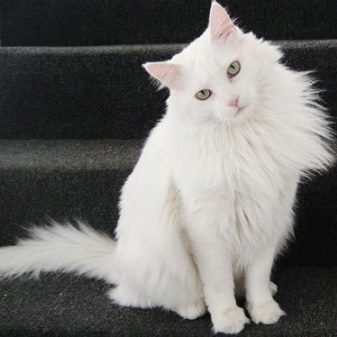

Kinds
Under this concept should be understood accepted for the breed standards of coat color.For plain colors, only one coat color is characteristic - the outer hair should be completely uniform without the slightest spots, tanning, or even specks. Two-tone color means the presence of two colors. Tricolor cats are also considered a standard, and the color should be in the form of a certain pattern.
The classic color option of this breed is, of course, white. It should be homogeneous, without the slightest specks of a different shade, while the skin of the paw pads and nose should be pink.
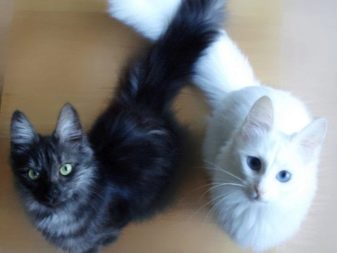
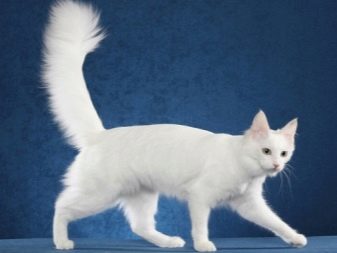
Each country has certain color requirements. For Great Britain, only individuals with a pure white tint are considered the standard, while in the USA, smooth-haired cats with a different color are allowed to register. But lilac and chocolate color is unacceptable in any country. In the USA, individuals with a white color and blue eyes are not allowed to register, since the transmission of such signs to offspring is fraught with the birth of deaf kittens.
White color is not the only one possible for this breed - recently cats with coal-black, blue, cream and even red coat are in demand.
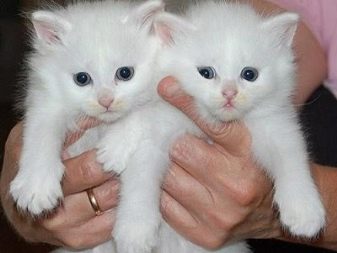
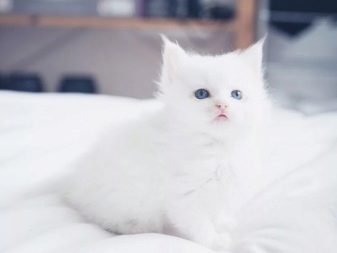
According to accepted standards, cats with black coat and skin should have the same or brown paw pads. Blue or gray with a silver tint should be combined with the color of the skin of the nose and pads, and if the coat is creamy, then the nose and pads should be pink. For the red color of the hair, the skin of the nose and pads should have a slightly lighter tone compared to wool.
The colors black and blue smoke imply the presence of two well-matched shades. In both cases, the main color is either black or gray with a silver tint, and the additional in both cases is white.
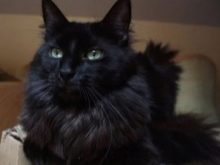
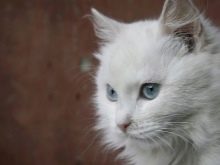
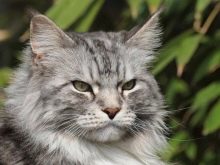
The color of cats with a specific pattern on the coat has different names. Depending on the location of the strips and the patterns they form, marble tabby and tabby mackerel are distinguished.
Tabby with a marble pattern is characterized by a specific arrangement of stripes. On the head, darker, in comparison with the main tone, stripes form a pattern that visually resembles the letter “M”. In the eye area, on each side of the outer edge, there are clearly defined, almost even lines ending in the nape of the neck.
From the place where the shoulder joint is located, three stripes go along the entire back. On each barrel of a cat there are stains and circles. In the neck, the lines have a slight crescent-shaped curve, and from the chest to the abdomen there are small spots arranged in two rows parallel to each other. The tail and legs are outlined by circular lines.
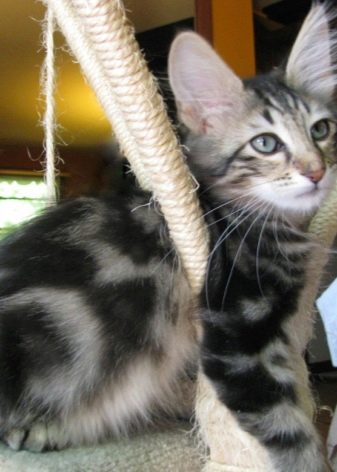
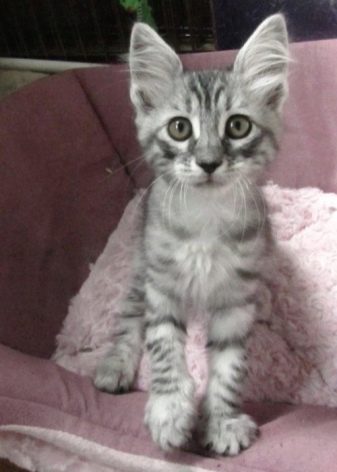
The tabby mackerel pattern is a bit similar in marble to the arrangement of strokes on the head, chest and limbs. A cat with this color on its head has the same letter “M”, and the outer corner of the eye and the back of the head are also connected by a line. Crescent-shaped lines are clearly outlined in the neck area, and “bracelets” on the legs and tail. But there are differences: a thin solid line runs along the spine, originating from the lowest point on the back of the head and ending at the base of the tail. On both sides there are thin continuous strips located perpendicular to the line of the spine.
Depending on the colors present in the color, several varieties of the form of tabby (classic mackerel) are distinguished. The main tone can be blue (gray with a silver tint), cream (light beige), brown-copper (dark red), silver and red.

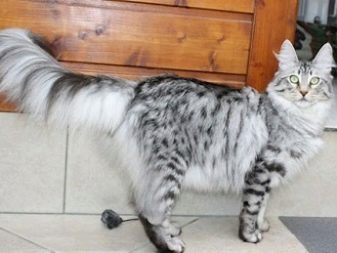
For silver tabby, an additional tone is black. The lines of the pattern and paw pads are painted in it. The skin of the nose has a brick red tint.
The look of red tabby is a pretty bright color. In this case, darker, in comparison with the base, strokes and lines of the figure are very clearly marked. The skin of the chin and lips are the same color as the picture.
The appearance of cream tabby is quite delicate. A darker pattern stands out beautifully against a light background. The skin of the nose and pads is pale pink, and part of the chin and lips coincide in tone with the base.
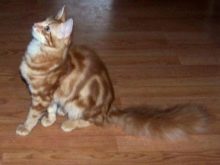
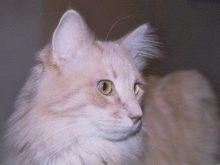
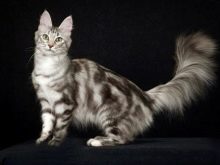
Kind of brown tabby. It differs from the others in its bright copper-brown base, against the background of which not only the lines of the pattern are marked in black, but also the hind limb. The skin on the pads can be either black or brown.
Gray with a silvery sheen of blue tabby wool looks very impressive. The color of the skin on the chin and lips coincides with the base, and the lines of the pattern have a slightly darker shade, while the skin of the pads and nose is pink.
Patchwork tabby has a very interesting color. The main background can be either with brown, blue or with a silver tint. The pattern in the form of spots, in shape resembling shreds of fabric, is painted either in cream or in red.
There is a group of colors with spots. The name of each color depends on the color and location of the spots. In most cases, 3 shades are present in the color.


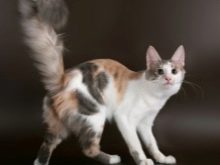
In a cat with a tortoise color, spots of red and cream color palette are evenly distributed over the entire surface, and tan marks are present on the muzzle with a similar shade. The main background color is a black tint.
Color chintz (calico) and chintz clarified. Both colors are characterized by more heaped spots in the upper areas of the body and head. The background in both the first and second colors is white, but only the calico spots are red and black, and in the lightened calico they have a blue and cream color.
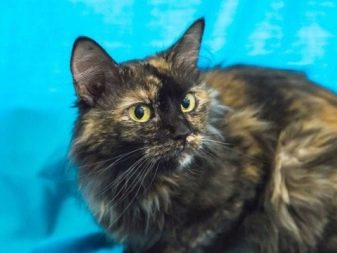
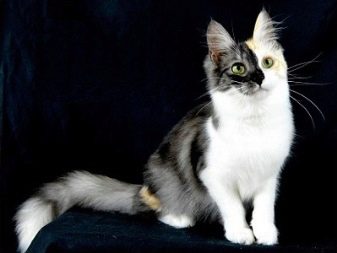
Blue-cream color is characterized by cream clearly defined with a uniform distribution over the entire surface of the spot. The main background has a blue tint.
Bi-color is a combination of two colors. The main background can be black, red, cream or blue, and the additional color is always white.
Very often, the Angora cat is confused with the Anatolian breed (Turkish Shorthair), and this is not surprising, because both breeds belong to the same Mediterranean group. And in that, and in another there is a white version of the color and eyes of different colors. They have visual similarities, but there are significant differences. For example, the Anatolian cat's outer hair is not only short, but also stiffer. In a shorter tail, compared with the Angora breed, the shape of the tip resembles a brush.
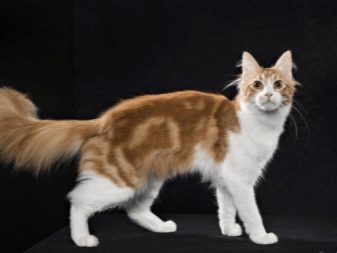
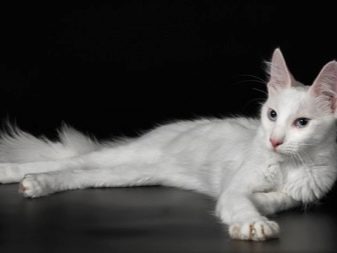
Conditions of detention
The Turkish Angora variety is not particularly pretentious species and, as a rule, does not require the creation of any exceptional conditions for it. But still, you should adhere to certain rules so that the pet feels comfortable. The content should be understood as recommendations for hygiene procedures and the organization of leisure Angora cats.
The main of hygiene procedures is, of course, combing. The Angora breed has long hair with a very soft and silky structure, so it requires regular care. The combing procedure should be carried out at least twice a week, and with the onset of molts occurring in the spring-autumn period, and even more often. The process itself is better to start from the head, and then move smoothly to the back, after which you can gently move to the base, and then to the tip of the tail. The abdomen and paws are combed out last. As a tool it is necessary to use a brush with a medium pile.
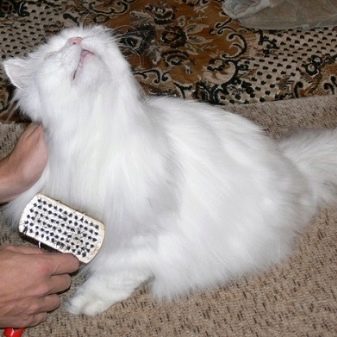
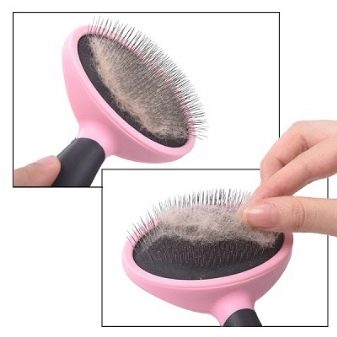
Owners who first became owners of the Angora beauty often have the question of whether to wash a cat. There is no definite answer to the question, since it all depends on individual characteristics, coat color and on trips to exhibitions. Cats are very clean creatures and do not need water procedures. Moreover, in most cases, frequent bathing removes the protective film from the skin, which can lead to weakening of the animal’s immunity and, as a result, to the disease.But if a cat often attends exhibitions, and her coat is white, then bathing is inevitable. For water procedures, it is better to use a special shampoo for cats, and for animals with a white color, regularly attending exhibitions, you can use a tool that removes yellowness.
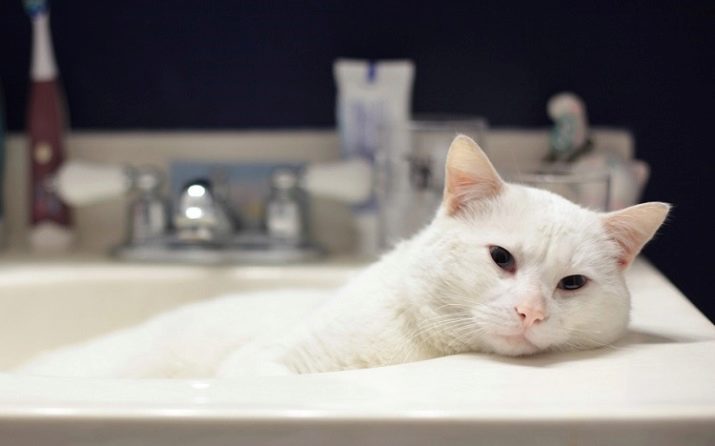
An equally important hygienic procedure is cleaning the cat's eyes and ears. To clean the discharge from the eyes, an exceptionally clean cotton pad is used, pre-moistened either in boiled water, or in a weak solution of chamomile, or in a special solution for the eyes.
To avoid infection, each eye should be treated with a separate disc.
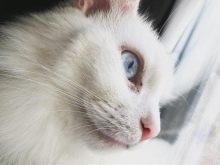

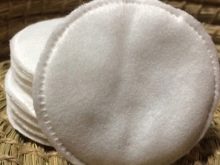
Ears no less than the eyes need regular examinations and treatments. Inspection is carried out for contamination. Cleaning is carried out with the help of special napkins soaked previously in a solution intended for cleaning the ears. The use of pieces of cotton wool or sticks for this procedure is undesirable, as there is a high probability of injury to this organ sensitive to a cat. Also, do not use hydrogen peroxide as a solution, since it has a drying, and not at all a moisturizing effect.
No less regularly you need to monitor the condition of the teeth. Appeared deposits on tooth enamel are cleaned with special tools in a compartment with a brush. This procedure can, of course, be carried out independently, but it is better if the veterinarian does it. You need to monitor the condition of the claws, or rather, their length. You need to trim them at least once a week, using special nippers for this. But, as a rule, Angora cats do not need this procedure - they successfully cope with this task on their own with the help of a claw point. To accustom them to such an object is quite simple - they perfectly understand what it is for.
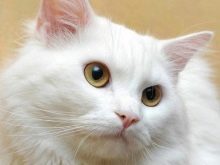
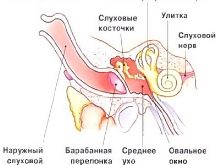
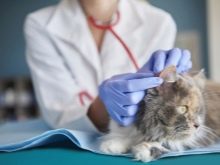
Angora cats are by nature excellent hunters and explorers. For this reason, if the owner has the opportunity, it is better to periodically let them out for a walk - fresh air and the sun have a beneficial effect on the health of the pet. For walks in the yard, animals must be fixed with a leash specially designed for cats, and in a fenced area you can do without it.
It is better to train Angora cats on the toilet tray from an early age. Usually, breeders give kittens already accustomed to the toilet, but sometimes the owner has to take on this mission. The digestive system of cats is arranged so that almost immediately after eating they tend to defecate, so after a meal they need to be taken to a tray and wait for the kitten to go to the toilet. As a rule, complete addiction occurs after 2-4 weeks.
The size and depth of the tray should be selected based on the weight and age of the cat, and the filler - on the basis of its flowability, environmental friendliness and the possibility of disposal.
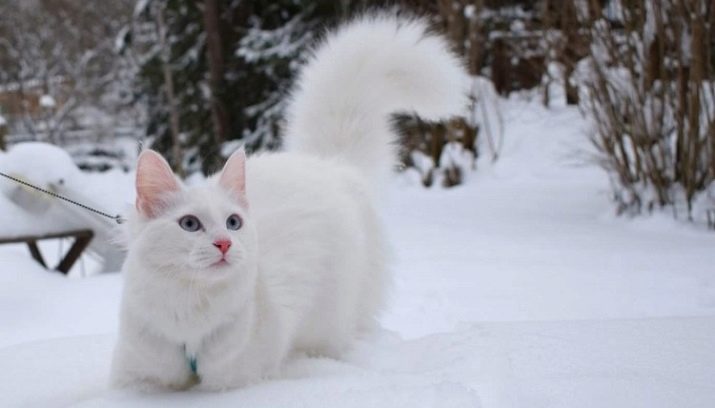
What to feed?
Correct balanced food for all necessary components is the key to good health and longevity of a cat.
Cats belong to the carnivorous group of animals, so their digestive system is designed to digest thermally untreated meat and raw eggs. But the natural type of nutrition is almost always unbalanced in the percentage of the necessary components. Although this food is rich in protein that saturates the cat’s body with essential amino acids, it doesn’t have the right balance between vital trace elements such as phosphorus and calcium. The latter, as a rule, is not enough, which inevitably leads to thinning of bones, teeth and claws. In addition, this type of food does not contain all the vitamins necessary for a cat, which will undoubtedly affect the work of internal organs, and the preparation of such a meal takes too much time and effort.
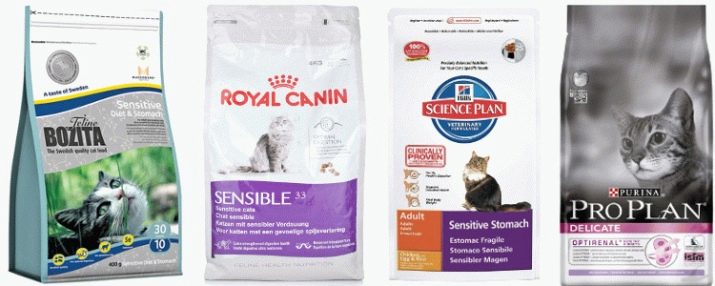
It is much simpler and more beneficial for cats to use industrial dry or wet foods as food. Moreover, today there are a huge number of manufacturers producing animal feed.
An argument in favor of choosing industrial feeds is not only their balance in all vitamins and minerals, but also the variety of flavors presented. It is known that Angora cats do not tolerate monotonous food and very often, according to many owners, refuse their once beloved food. Solving the problem with industrial feed is quite simple - you just need to change one taste for another or offer the cat food from another manufacturer.
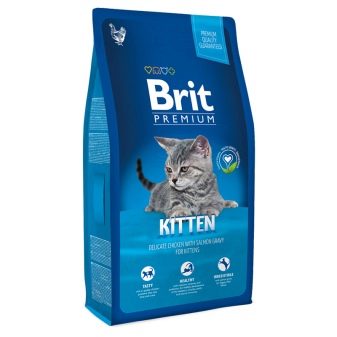
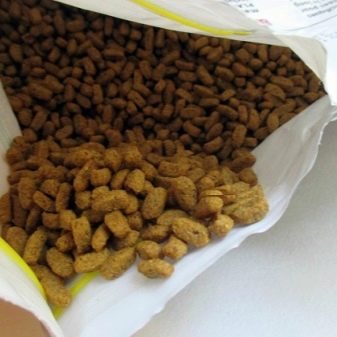
An important argument in defense of industrial feeds can be the fact that the snow-white coat of a cat from the regular use of thermally unprocessed offal can acquire a slightly yellowish tint, which, of course, does not add to the animal aesthetic appeal, especially if the animal is often taken to exhibitions.
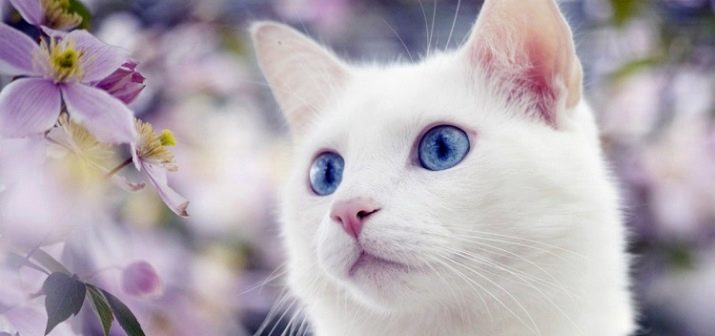
When choosing industrial feed, of course, the taste preferences of the pet should be taken into account. Also, do not forget about the quality of the product offered to the cat. Preference should be given to premium feeds, since it is in them that there are no flavor enhancers and dyes. In addition, the proportion of meat in them is slightly higher than in feeds of a low price category, and in terms of vitamins and microelements, such feed is almost perfectly balanced, so pets with rare exceptions do not need to be fed with additives.
Very often the question arises for the owners about which food is better to give: dry or wet. The choice of one or another species depends not so much on the preferences of the animal, but on the owner himself. Dry food is very salty, which means that the animal should always have clean water in its bowl. Moreover, Angora cats drink a lot and often.
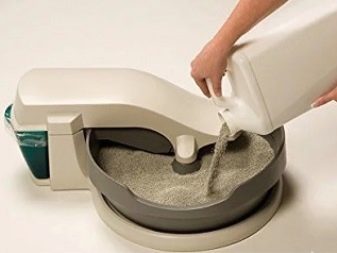
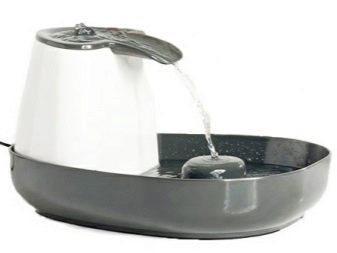
Dry food is completely contraindicated in neutered cats, since, according to most veterinarians, it is one of the main causes of urolithiasis. With a natural diet of feeding castrated cats, you should not indulge in fish as well, since it also contributes to the development of urolithiasis.
The amount and frequency of feed depends on the age and condition of the animal. Typically, on packages with industrial feed, manufacturers always indicate a single dose, depending on weight and age, and the frequency of feedings per day.
Kittens, pregnant cats and weakened animals should be fed often and in small portions, usually at least 4-5 times a day.
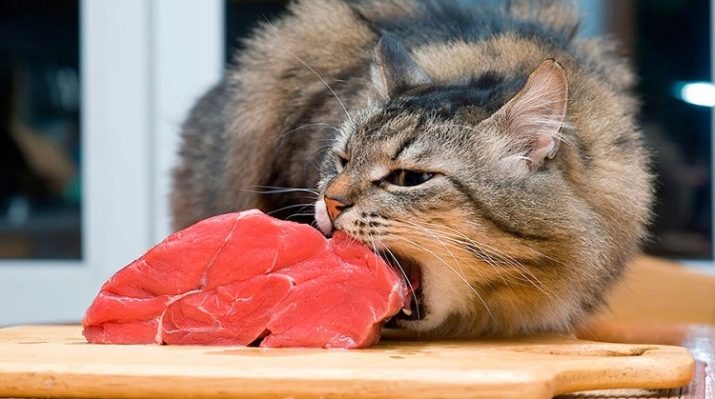
The daily feed rate for an adult healthy animal ranges from 200-250 g. If the pet’s diet consists mainly of raw meat, it is necessary to add a few vegetables to it, since the percentage of proteins and carbohydrates in healthy cat food should be 3 to 1. In industrial feeds, the percentage of these components is as close to normal as possible. For adults and healthy individuals, the frequency of feeding is reduced to three meals a day. In the diet of kittens and weakened animals, as a rule, additives with the necessary trace elements and vitamins are included. Cats with a natural diet also need supplements. To select the necessary supplements, it is better to consult a veterinarian.
Regardless of the type of food chosen, and Turkish cats are no exception, animals need to consume special weed. With its help, cats get rid of randomly swallowed lumps of wool. Usually they eat this grass with pleasure. The main thing is to choose the option you like. You can buy such grass in any pet store, but it is better to grow it yourself using grains of oats, barley or wheat.
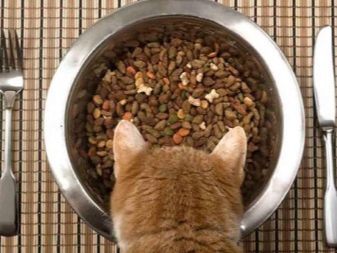

Health
Angora cats have a fairly good immunity and for this reason are not particularly prone to various diseases.But still they are living creatures, and therefore there is always the likelihood of a particular disease. Diseases that can appear in cats are usually divided into three groups: infectious (viral, bacterial, fungal), invasive (parasitic) and non-infectious (congenital or acquired defects in organs and tissues).
Individuals of the Angora breed are prone to certain diseases that are congenital in nature. One of the most common is hypertrophic cardiomyopathy (pathological thickening of the walls of the muscle tissue of the heart).
This disease is the result of a gene mutation and can occur in young cats, whose age does not exceed 6 years, and in very mature animals, whose age is close to a decade.


The disease can pass both asymptomatically and with the manifestation of the symptoms characteristic of the disease. Moderately clinical manifestations include:
- labored breathing,
- low stamina
- fatigue,
- complete loss of consciousness.
Such animals are usually phlegmatic, passive and very rarely show their motor activity. The diagnosis is made on the basis of echocardiography, and the veterinarian prescribes the treatment and, as a rule, selects the drugs for treatment individually. Prevention of the disease is its early detection, constant monitoring and preventive examination at least once a year.
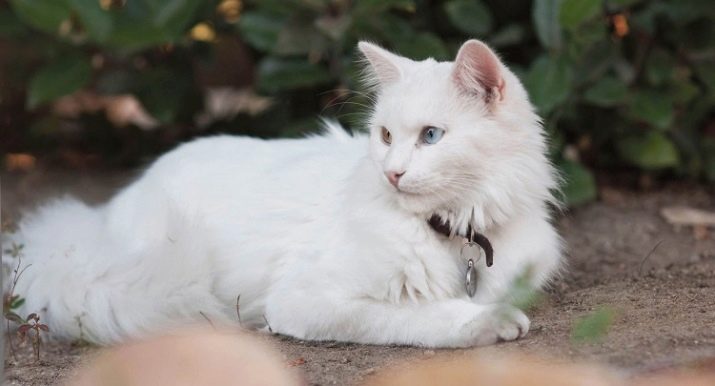
Another congenital disorder is ataxia or cerebellar ataxia. This disease is neurological in nature and manifests itself in the form of impaired coordination of movement. The cerebellum, which is responsible for coordinating movements, is affected even in the womb, so clinical symptoms appear immediately as soon as the kitten begins to move actively. Clinical symptoms are considered manifestations such as an altered gait, widely spaced legs, sudden falls and unnatural head shakes.
This disease is diagnosed with an MRI, but an experienced veterinarian is able to make the correct diagnosis even after a simple visual examination. There is no cure for this disease, but animals with such a diagnosis can lead a completely normal life, because they do not experience physical pain, and their mental abilities are at a very high level.
Moreover, many veterinarians agree that when cats live in good conditions and lead an active lifestyle, they may well live to old age.
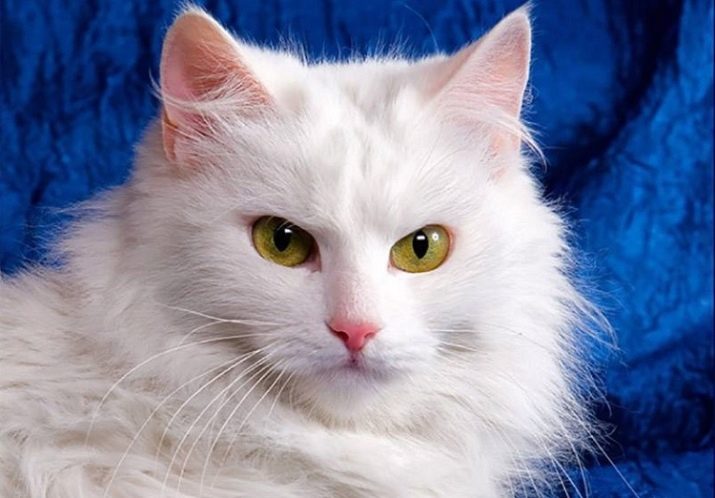
Another disease Angora cats are addicted to is deafness. Individuals with pure white coat color and eyes with blue iris color are prone to this disease. Angora cats, in which only one eye has a blue iris, usually do not suffer from deafness, but are carriers of this gene. Sometimes among such individuals cats with one-sided deafness still come across. In order to confirm or refute this disease, it is necessary to conduct a special test, which at present can be done in almost any veterinary clinic.
Infectious diseases are no less scary for cats. The most dangerous include varieties such as rhinotracheitis, infectious peritonitis, calcivirosis, panleukopenia (plague), leukemia and trichophytosis. Timely vaccination saves from most diseases. Cats in most cases are vaccinated annually, starting from 10-12 weeks of age. Most modern vaccines allow you to develop immunity from several diseases at once.
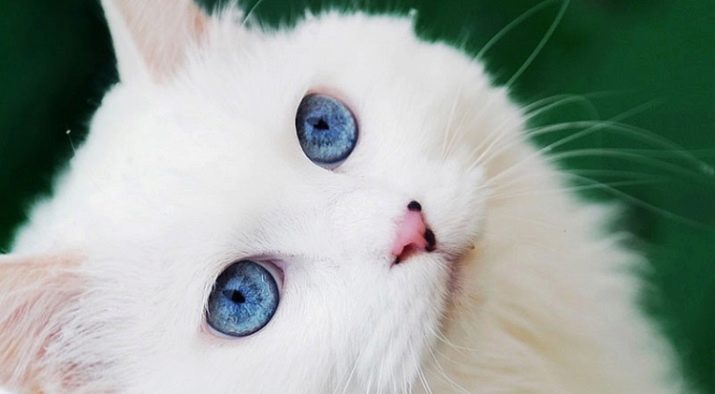
The most dangerous diseases of an invasive (parasitic) nature include toxoplasmosis and otodectosis.To prevent cat disease with toxoplasmosis, a regular and thorough cleaning of the toilet tray should be carried out, timely deworming should be carried out, refusal to feed with raw meat, preferring industrial feeds. It is also necessary to make sure that the cat does not eat caught rodents, as they are more likely to be a source of infection. And, of course, you need to regularly visit a veterinarian for a routine examination.
Special anti-mite drugs that a veterinarian prescribes save from otodectosis. Drops are instilled only after processing the auricle.
As a rule, modern drugs help pretty quickly rid cats of this disease.

In the next video, you will find the features of the Turkish Angora breed.
